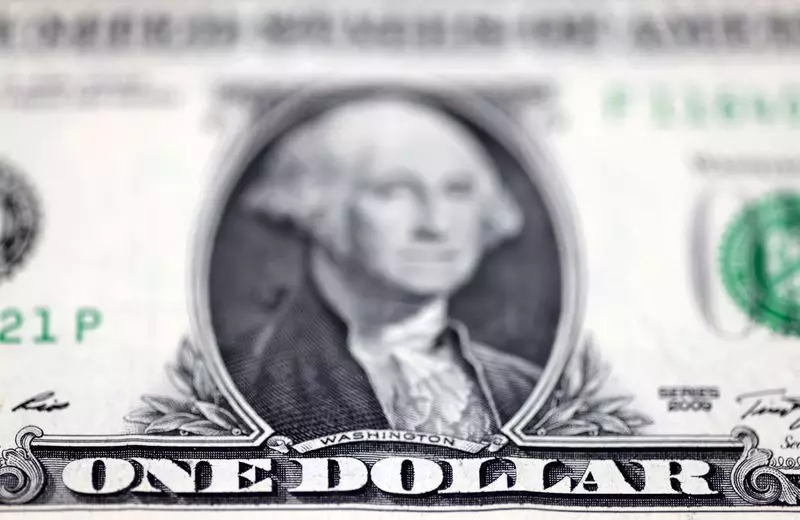In the wake of political shifts and economic uncertainty, the U.S. dollar has shown notable resilience, maintaining a robust position in the global currency market. Traders are closely monitoring the implications of President-elect Donald Trump’s proposed policies, especially as they weigh the likelihood of less aggressive interest rate cuts from the Federal Reserve. This analysis delves into the factors influencing the dollar’s strength amidst fluctuating sentiments and geopolitical tensions.
Following the U.S. presidential election on November 5, the dollar has surged more than 2% as speculation regarding Trump’s economic policies looms large. Investors are contemplating how measures such as potential tariff implementations may influence inflation and alter the trajectory of the Federal Reserve’s monetary policies. The heightened expectation of inflation, propelled by Trump’s campaign promises, has led to a reconsideration of the anticipated rate cuts. As market analyst Matt Simpson stated, the current market environment makes it challenging for traders to short the dollar, given escalating doubts surrounding the Fed’s immediate rate-cutting intentions.
Recent shifts in the perceptions of Federal Reserve interest rates have added a layer of complexity to market strategies. The odds of a Fed rate cut at the upcoming December meeting have diminished sharply, from 82.5% to just under 54%, as indicated by CME’s FedWatch Tool. While economists largely anticipate a reduction in rates during this meeting, there are growing concerns about future inflationary pressures that could dampen the effectiveness of such cuts. Comments from Fed governors have only muddied the waters further, revealing divergent views on inflation’s trajectory—one highlighting ongoing concerns, while another exudes confidence in easing price pressures. This uncertainty is likely to keep investors on edge as they navigate the dollar’s valuation and its impact on global markets.
The euro’s performance against the dollar has faced significant challenges, particularly in light of the escalating tensions in Eastern Europe. Recent military developments, including Ukraine’s use of advanced munitions, have contributed to a decline in sentiment towards the euro, reinforcing the dollar’s ascent. As geopolitical tensions mount, analysts expect tariffs and trade policies to exert further pressure on the eurozone economy, thus benefiting the dollar—a sentiment echoed by City Index’s Simpson. The euro’s recent underperformance, dipping close to October lows against the dollar, indicates a potential shift in market confidence, underscored by the currency’s substantial weighting within the dollar index.
The Japanese yen has also faced pressure, despite a slight recovery from previous lows. Following a brief increase above the 156 mark, concerns over the yen’s decline have resurfaced as market participants speculate on potential interventions by Japanese authorities. The focus now shifts to Bank of Japan Governor Kazuo Ueda, whose upcoming remarks at a financial forum may provide clarity on prospective monetary policy adjustments. Investors are keenly attuned to any signals regarding a rate hike by the year’s end, especially in the context of the yen’s performance against historical lows.
Further afield, the British pound has managed to gain marginal traction against the dollar, buoyed by recent inflation figures exceeding expectations. With inflation rates creeping above the Bank of England’s 2% target, the central bank’s cautious stance regarding rate cuts remains firmly in place. This acknowledgment of economic realities ensures that the pound may retain some of its strength against the dollar, albeit within a volatile trading environment influenced by both domestic and external factors.
Amidst traditional currency fluctuations, Bitcoin has experienced a remarkable rally, leading many to speculate on a more favorable regulatory landscape under the incoming administration. As hopes rise for a supportive framework for cryptocurrencies, Bitcoin’s trajectory appears intertwined with the broader shifts in market sentiment influenced by political and economic considerations.
The U.S. dollar stands at a crossroads, buoyed by political maneuverings and economic expectations but also beset by uncertainties that could redefine its trajectory. As the landscape shifts with varying inflation projections, rates speculation, and geopolitical events, the dollar’s ability to maintain its position will hinge on how these multifaceted challenges unfold. Investors remain vigilant, continually recalibrating their strategies in response to the evolving economic narratives that dictate the soaring or sinking fate of currencies across the globe.

